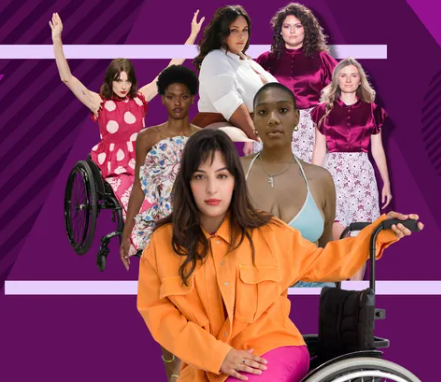In recent years, the fashion industry has faced increasing scrutiny over its lack of diversity and inclusion. Historically, the industry has been criticized for its narrow beauty standards and limited representation of people of color, different body types, and the LGBTQ+ community. However, there has been a recent shift towards inclusivity, with many brands and designers taking steps to address these issues.
One of the most significant steps towards diversity and inclusion in the fashion industry is the inclusion of a more diverse range of models in runway shows and advertising campaigns. Brands and designers are now hiring models of different ethnicities, body types, and ages to represent their products, sending a message that fashion is for everyone. Additionally, many brands are now collaborating with influencers and celebrities from diverse backgrounds to further increase representation and reach new audiences.
Another important aspect of diversity and inclusion in the fashion industry is the creation of more inclusive sizing. Historically, many brands have offered limited sizing options, catering primarily to thin, straight-sized consumers. However, this is changing, with more brands expanding their size ranges to include plus-sized and extended sizes. This change not only benefits consumers who have previously been excluded from fashion, but it also allows brands to reach a wider audience and increase sales.
In addition to diversity in sizing and representation, the fashion industry is also taking steps to address systemic issues such as racism and discrimination. Many brands are now publicly acknowledging the need for change and taking steps to implement anti-racist policies and practices. This includes hiring more diverse staff members, conducting diversity and inclusion training for employees, and partnering with organizations that support marginalized communities.
Some brands have also taken steps towards sustainability and ethical production, recognizing that environmental and social issues are also related to diversity and inclusion. Many fashion companies are now making efforts to reduce their environmental impact and ensure that their production processes are fair and ethical. This includes using sustainable materials, reducing waste, and ensuring that workers are paid fairly and work in safe conditions.
While there is still a long way to go, the fashion industry’s efforts towards diversity and inclusion are a positive step forward. By expanding representation and inclusivity, the industry can help to break down barriers and create a more accepting and diverse society. It also makes good business sense, as a more diverse customer base means a larger potential audience and increased sales.
However, it is important to note that some efforts towards diversity and inclusion may be viewed as performative or tokenistic. Brands and designers must ensure that their efforts are genuine and long-lasting, rather than simply a response to public pressure. This means making structural changes to their businesses, rather than simply making superficial changes to advertising campaigns or product offerings.
In conclusion, the fashion industry is beginning to take steps towards diversity and inclusion, recognizing that fashion is for everyone and that representation matters. This includes increasing representation of diverse groups in advertising and runway shows, expanding size ranges, and addressing systemic issues such as racism and discrimination. While there is still much work to be done, these efforts are a positive step forward, creating a more accepting and diverse industry that benefits everyone.









